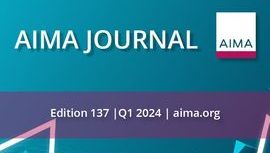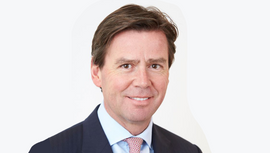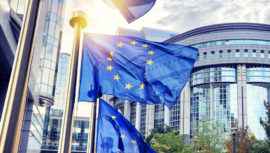Evolution: The emerging strategies in AIFMD marketing
By Owen Lysak, Senior Associate, Clifford Chance LLP
Published: 30 September 2015
We are witnessing an evolution in the marketing strategies used by alternative investment fund managers targeting EU investors, an evolution born largely in response to the issues faced by managers since the inception of the Alternative Investment Fund Managers Directive (AIFMD) marketing regime in July 2013.
As AIFMD begins to bed down, a number of common trends (and recurring questions) for fund managers are developing, including a continued focus on what can actually be characterised as a true "reverse-enquiry" under AIFMD, as well as ongoing debate around at what stage in a fund-raising a manager is actually "marketing" for the purposes of AIFMD. As managers continue to face diverging national approaches in a number of important areas, they are left with significant practical issues when trying to implement a cross-EU marketing strategy. The long-awaited advice from the European Securities and Markets Authority (ESMA) on the possible extension of the marketing passport, issued in July 2015, did little to dispel the uncertainty. Yet despite the challenges, those of the AIFMD alongside those posed by the wider regulatory agenda for institutional investors, there have been successes, as managers adapt their marketing strategies by adopting targeted, selective approaches, thereby developing market practice and driving a consensus on achieving AIFMD marketing compliance.
In this article, we discuss some of the practical issues that have triggered these trends and lead to the evolution of AIFMD marketing strategies in the EU.
Lack of guidance around "reverse-enquiry"
Because of the challenges of AIFMD registration in many jurisdictions, exactly when and how a manager can rely on reverse-enquiry from an EU investor has taken on real importance. And yet, other than an understanding that reverse-enquiry is interpreted narrowly under AIFMD, there has been a distinct lack of clear regulatory guidance (or examples) of what, in the regulators' eyes, would constitute a genuine reverse-enquiry.
Some EU regulators historically applied a relationship approach to reverse enquiry – if the original contact with an investor was established in line with local marketing requirements, then it was possible to reach out to that investor on similar, new investments in the future and that would not be considered marketing. However, other EU regulators applied a transaction-by-transaction approach, notwithstanding that you might have an ongoing relationship with an investor - a manager would need a fresh reverse enquiry for each and every transaction or investment. Post-AIFMD, it is not clear to what extent those differing approaches still exist. Certainly, taking into account other EU regulatory developments in the pipeline such as MiFID2 (the revised broker-dealer regulation) which has an even narrower definition of reverse-enquiry (linked to manager-investor interaction being at the exclusive initiative of an investor), it feels that the relationship approach could well be jettisoned by EU regulators.
A real stumbling block for regulators (and so adding to the uncertainty for managers) has been the variety of manager-investor interaction, ranging from the marketing of investment strategies (rather than specific fund vehicles) through to more novel approaches, such as investors collectively establishing websites and then issuing requests for proposals to managers. Such trends make the reverse-enquiry test regulators have typically applied in the past seem particularly inflexible. At the same time, there is a growing sense that regulators may start to pay particular attention to reverse-enquiry in the context of manager activity – looking at such factors as the number of investors involved, the audit trail of the manager in respect of the investor contact, and so forth. Interestingly, there are now often many more questions about whether the use of third party agents – such as the appointment of a placement agent in Europe or the use of a capital introduction provider/capital introduction services – jeopardises reliance on reverse-enquiry.
The implications of this are certainly being felt in practice. To take the common example of a manager having an ongoing relationship with an investor from an existing fund, that relationship is likely to include discussions of the performance of the manager, possible new investments, interest in potential future fund raising and so on, without a specific fund or investment opportunity actually being proposed. However, once the manager comes to raise its next fund, it will want to gauge whether the existing investor is still interested in the new potential fund opportunity. While there has not, in that scenario, been any active marketing to the investor of the new fund, it is not clear that the manager can treat interaction with the investor as a reverse-enquiry (even though the relationship with the investor has already been established prior to the new fund raise). And so, more and more, we see managers analysing whether, in practice, they can discuss new funds with existing EU investors.
What is AIFMD marketing?
Two years in, what is still surprising under AIFMD is the lack of clarity that exists on what exactly is marketing. For example, is there a certain level of soft or pre-marketing that is acceptable? Is there certain promotional activity you can undertake before triggering "AIFMD marketing" requirements? Unfortunately, the answers can still vary from one EU jurisdiction to another.
What we have seen is jurisdictions taking different approaches to defining marketing, some adopting a narrow concept of what is acceptable as pre-marketing and others adopting a much broader interpretation. In some jurisdictions (such as Denmark and Sweden) "marketing" can potentially capture any form of advertising or sales promotion. In contrast, the position in other jurisdictions (such as The Netherlands and the UK) can be that there will not be AIFMD marketing until documentation is in sufficiently final form for an investor to be able to make a subscription in a fund.
This means that a real challenge has become establishing precisely where the tipping point lies between pre-marketing and marketing and how (if at all) this can be translated into a consistent, practical marketing strategy across the EU. That can be very difficult where, in some jurisdictions, even a draft offering document (such as a PPM) may not be far enough along the line to be AIFMD marketing, but in other jurisdictions a teaser on a specific fund vehicle can trigger AIFMD requirements.
Acknowledging this difficulty, ESMA (the European securities regulator) in its recent consultation on extending the AIFMD marketing passport noted that the feedback it had received included that marketing was hampered by a lack of consistency across EU countries on what is “marketing” (as well as a lack of guidance around reverse-enquiry). However, ESMA did not issue any additional guidance around the definition of marketing or reverse enquiry.
As a result of all of this, it is becoming more common now, particularly for non-EU managers, to focus energies primarily (or only) on those EU jurisdictions which allow soft marketing without triggering AIFMD requirements. Being able to talk to investors on the basis of draft documentation allows managers, in those targeted jurisdictions, to assess real investor interest and gauge whether the time and cost of AIFMD registration is worthwhile. Indeed, interestingly, those EU jurisdictions with a broader concept of pre-marketing have tended also to be the jurisdictions with more straightforward AIFMD registration requirements, making a manager's cost-benefit analysis much easier.
Extension of the AIFMD marketing passport
Against this backdrop, there has been an ongoing consultation in respect of extending the "marketing passport" currently available to some managers under AIFMD.
So far, under AIFMD, the marketing passport has only been available to EU managers marketing EU funds. EU managers marketing non-EU funds and non-EU managers marketing either their EU or non-EU funds have, instead, been required to use the ‘marketing without a passport’ route, using national private placement regimes (NPPRs).
However, the AIFMD did provide for the marketing passport to be potentially extended, to non-EU managers and to EU managers of non-EU funds, should this be advised by ESMA. ESMA has now issued this advice, concluding that the passport could be extended to Guernsey, Jersey and (conditionally) Switzerland, on the basis that there are no significant obstacles regarding investor protection, market disruption, competition and the monitoring of systemic risk in those countries that would impede funds and managers located in these countries applying for a passport.
It is unclear at the moment how quickly assessment will be made of other non-EU countries for the passport, and it is not certain that ESMA will recommend the extension of the passport to all major asset management and fund jurisdictions. ESMA has not indicated a timetable for assessment and it is possible that the assessment process may become protracted. For example, ESMA has noted that assessing the extent to which the regulatory framework of the particular non-EU country varies from AIFMD is a necessary consideration. Experience from the implementation of EMIR in the OTC derivatives context shows that satisfying the test for reciprocity and equivalence is a hurdle not easily overcome (and since the equivalence process started in 2012 under EMIR, only a handful of equivalence determinations have been made). Furthermore, as the assessment methodology focuses on regulatory issues, ESMA suggests that the co-legislators may also wish to consider other factors, such as the fiscal and anti-money laundering and counter-terrorism regimes in the non-EU country, which will also add to the complexity of the assessment.
Additionally, it is also unclear under AIFMD whether the Commission has the discretion to extend the passport on a jurisdiction-by-jurisdiction basis, rather than to the non-EU as a single block. The Commission is required to take into account the criteria assessed by ESMA, but there is no indication that the Commission can extend the passport on a staggered basis, country-by-country (even where ESMA has given a positive recommendation in respect of some non-EU jurisdictions and not others). This will be relevant to the Commission’s decision to switch on the passport or not, particularly the additional advice from ESMA that the Commission may want to wait before extending the passport until ESMA has completed its assessment of a larger number of non-EU jurisdictions.
Where a positive recommendation from ESMA is important (assuming the passport is extended to the non-EU as a single block), and so why many non-EU jurisdictions are interested in ESMA’s assessment, is that being able to rely on the passport will require the non-EU manager to obtain prior authorisation in an EU “member state of reference”. It is not clear whether such prior authorisation will be possible if the manager’s home jurisdiction is not a non-EU jurisdiction for which ESMA has given positive advice.
Increasing pressure on EU institutional investors
Of course the AIFMD is not the only regulation affecting asset managers. A new challenge developing for managers is the sense that EU regulation is becoming more restrictive on investment by institutional investors in alternative investment funds. Solvency II (the prudential regulation of European insurers) imposes a higher regulatory capital requirement for insurers investing in certain types of alternative funds (including hedge funds) compared to more straightforward securities, and European insurers have started to factor this into their investment plans for the coming months. Similarly, there has recently been also an EU consultation on limiting the exposure (by applying higher capital charges) of European banks to "shadow banking" entities. The definition of shadow banking entities covers all funds (other than UCITS funds) that engage in "credit intermediation" (which includes simple lending), even if credit intermediation is not the fund's main business (bidcos, holding companies, etc.). These developments, potentially affecting demand, will need to be factored in by managers when planning EU fund-raising.
Conclusion
The key challenge for managers continues to be the lack of harmonisation of the AIFMD rules on marketing which, while recognised by regulators, seems unlikely to be helped by additional regulatory guidance any time soon. Against a backdrop of increasing regulation and focus on European institutional investment in funds, the challenges look likely to continue. However, the challenges are not necessarily insurmountable: managers can be successful by adopting targeted and selective approaches to EU investors. This is helping to develop a consistent practice amongst markets participants as to how to approach AIFMD marketing compliance.






